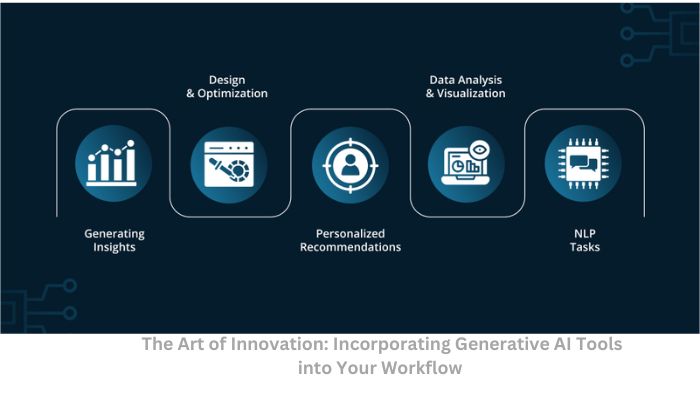When integrating AI into your workflow, it’s crucial to have clear goals and use tools that align with your organization’s needs. Generative AI tools can enhance learning objectives and deliver realism in 3D environments for VR training.
However, they must be used strategically in a transparent workflow driven by educational objectives. AI generative systems can automate processes by reducing human steps, especially for high-accuracy processes like assessing invoices and purchase orders. For instance, a non-profit managing a winter Community Market can use generative AI to create content and automate specific steps, eliminating human errors and increasing efficiency. However, keeping a human supervisor in the loop and keeping AI from taking over decision-making or quality control is essential.
Determine the Tools You Need
Generative AI tools can be valuable for enhancing workflows and reducing risk. However, it’s crucial to identify the goals and workflows you want to improve with a new tool before exploring options. DevOps professionals often need help to navigate various tools when searching for specific logs or observability data.
Generative AI can streamline these processes by examining trends in user queries. Some tools can provide developers with code snippet suggestions, speeding up the development process. UX researchers can also benefit from generative AI’s visual interpretations and inspiration. Additionally, generative AI can make workflows more efficient by automatically translating legacy code to modern languages, helping organizations modernize their technology by reducing costs and complexities associated with cloud-native deployments or microservices re-platforming.
Streamline your processes
AI tools are increasingly being used to automate repetitive tasks, such as ad copy creation and data mining, freeing time for employees to focus on higher-value work. Generative AI, unlike traditional algorithms, works differently and is more effective for tasks involving Natural Language Processing (NLP) and content creation.
It can improve communication by automatically translating and adjusting text into different languages or simulating tone and emotion to accelerate knowledge transfer in the workplace. Generative AI can produce product prototypes, create marketing campaigns, and optimize existing projects. However, companies must be aware of potential hazards, such as “shadow AI” and potential errors, and ensure the quality of AI-generated content and code. Companies must monitor their use to prevent “shadow AI” and ensure the accuracy of AI-generated content.
Establish your goals
To effectively use generative AI tools in your workflow, start by identifying and breaking your goals into smaller components. Focus on content generation first to ensure high-quality results. Once you’ve identified the most effective tools, incorporate them into your workflow and provide initial training for your human team. This will help the tools understand and interpret your data, ensuring accurate results. Ensure your team is well-documented and the tools have access to all necessary information. This will help ensure the process is efficient and avoids confusion and unnecessary risk.
Conclusion
Generative AI tools can significantly improve efficiency and accuracy in various tasks. By setting clear objectives and choosing tools that align with an organization’s needs, AI can streamline processes, reduce human error, and boost productivity. These tools automate content creation, improve communication, modernize technology, and manage repetitive tasks. However, it’s crucial to maintain human oversight to mitigate risks like “shadow AI” and content inaccuracies. By integrating these tools and providing comprehensive training, organizations can balance technological advancement and human oversight, leading to a more effective and innovative workflow. Read More
